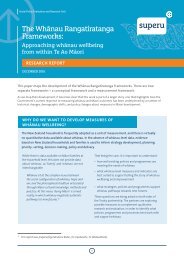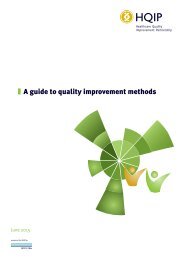2fyY1Py
2fyY1Py
2fyY1Py
You also want an ePaper? Increase the reach of your titles
YUMPU automatically turns print PDFs into web optimized ePapers that Google loves.
117. TRP buying. In: Introducing new ways to buy, optimise and measure ads for a mobile world. Facebook for Business<br />
website post, 30 September 2015 (https://en-gb.facebook.com/business/news/Ad-Week-UK).<br />
118. Valkenburg PM, Peter J. The differential susceptibility to media effects model. J Commun 2013;63:221–43.<br />
119. Piotrowski JT, Valkenburg PM. Finding orchids in a field of dandelions: understanding children’s differential<br />
susceptibility to media effects. Am Behav Sci 2015;59:1776–89.<br />
120. Multicultural. Digital Ads (http://digitalads.org/how-youre-targeted/case-studies/multicultural, accessed 26<br />
September 2016).<br />
121. Grier S. African American & Hispanic youth vulnerability to target marketing: implications for understanding the<br />
effects of digital marketing (http://digitalads.org/how-youre-targeted/publications/african-american-hispanic-youthvulnerability-target-marketing,<br />
accessed 26 September 2016).<br />
122. Kennedy R, Northover H. How to use neuromeasures to make better advertising decisions. Questions practitioners<br />
should ask vendors and research priorities for scholars. J Advertising Res 2016;56:183–92.<br />
123. Smallwood B. Resisting the siren call of popular digital media measures. J Advertising Res 2016;56:126–31.<br />
124. Boyd d. (2014b) What does the Facebook experiment teach us? Blog post; 2014 (http://www.zephoria.org/thoughts/<br />
archives/2014/07/01/facebook-experiment.html).<br />
125. Schroepfer M. Research at Facebook. Facebook Newsroom, 2 October 2014 (http://newsroom.fb.com/news/2014/10/<br />
research-at-facebook/).<br />
126. Bolluyt J. Are Facebook’s unannounced experiments improving ethically? The CheatSheet, 7 October 2014 (http://<br />
www.cheatsheet.com/technology/are-facebooks-unannounced-experiments-improving-ethically.html/?a=viewall).<br />
127. Polatinski E. Facebook minimum age limit should be removed. ZDNet, 20 May 2011 (http://www.zdnet.com/article/<br />
mark-zuckerberg-facebook-minimum-age-limit-should-be-removed/, accessed 12 August 2016).<br />
128. Boninger F, Molnar A. Learning to be watched: surveillance culture at school. In: 18th Annual Report on Schoolhouse<br />
Commercializing Trends, 2014–2015. Boulder, CO: National Education Policy Center; 2016 (http://nepc.colorado.edu/<br />
publication/schoolhouse-commercialism-2015, accessed 16 July 2016).<br />
129. The balancing act: getting personalization right. Yahoo; 2014 (https://advertising.yahoo.com/Insights/BALANCING-ACT.<br />
html).<br />
130. Johnson B. Privacy no longer a social norm, says Facebook founder. The Guardian, 11 January 2010 (https://www.<br />
theguardian.com/technology/2010/jan/11/facebook-privacy).<br />
131. Kennedy H, Moss G. Known or knowing publics? Social media data mining and the question of public agency. Big Data<br />
Society 2015;July–December:1–11.<br />
132. Summary report of qualitative research into public attitudes to personal data and linking personal data. London:<br />
Wellcome Trust; 2013 (https://wellcome.ac.uk/sites/default/files/wtp053205_0.pdf, accessed 12 August 2016).<br />
133. Madden M, Lenhart A, Cortesi S, Gasser U, Duggan M, Smith A, et al. Teens, social media, and privacy. Washington DC:<br />
Pew Research Center; 2013 (http://www.pewinternet.org/2013/05/21/teens-social-media-and-privacy/, accessed 17<br />
April 2016).<br />
134. Boyd d. (2014b). It’s complicated. The social lives of networked teens. New Haven: Yale University Press; 2014 (http://<br />
www.danah.org/books/ItsComplicated.pdf).<br />
135. Apps environment research report. Puteaux: Kantar Media; 2014 (http://stakeholders.ofcom.org.uk/binaries/research/<br />
telecoms-research/Apps_Environment.pdf).<br />
136. Toubiana V, Narayanan A, Boneh D, Nissenbaum H, Barocas S. Adnostic: privacy preserving targeted advertising.<br />
Presented at the 17th Annual Network and Distributed System Security Symposium, San Diego, CA; 2010 (https://<br />
crypto.stanford.edu/adnostic/adnostic.pdf, accessed 13 April 2016).<br />
137. The 21st century gingerbread house: how companies are marketing junk food to children online. London: British Heart<br />
Foundation; 2011.<br />
138. Television advertising of food and drink products to children: final statement. London: Ofcom; 2007 (http://<br />
stakeholders.ofcom.org.uk/consultations/foodads_new/statement/).<br />
139. Foodwatch-Studie. Kindermarketing für Lebensmittel. Freiwillige Selbstverpflichtung der Lebensmittlewirtschaft (“EU<br />
Pledge”) auf dem Prüfstand [Foodwatch study. Marketing food products to children. Testing self-regulation by food<br />
companies (“EU Pledge”)]. Foodwatch; 2015 (http://www.foodwatch.org/uploads/media/2015-08-24_foodwatch-<br />
Studie_Kindermarketing_EU_Pledge_auf_dem_Pruefstand_final_WEB_01.pdf).<br />
37






